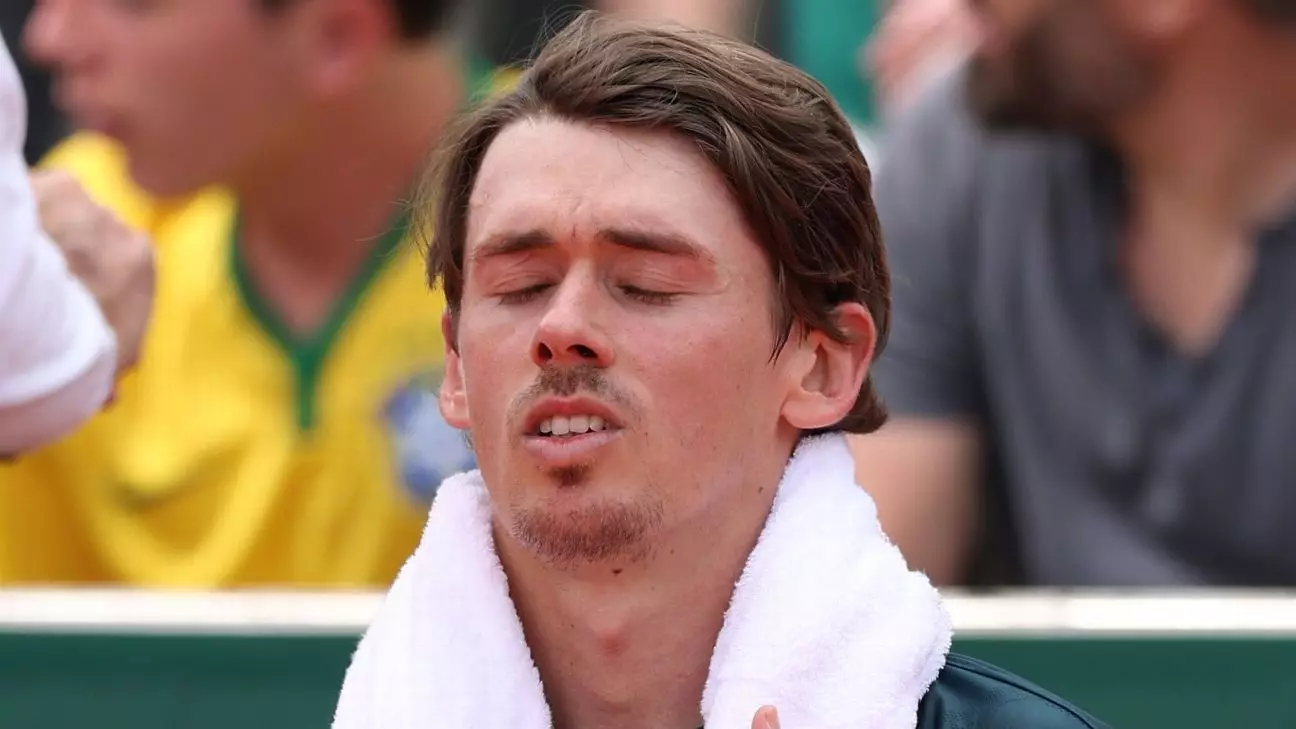In the high-stakes world of professional tennis, the pressure is relentless—not only to perform but to participate. Recent experiences shared by players like Alex De Minaur and Casper Ruud underscore a mounting concern about the demanding calendar that makes elite tennis feel less like a sport and more like an endurance test. Following his early elimination from the French Open, De Minaur openly lamented the exhausting grind that he and his peers endure year after year. Competing in a system that often prioritizes rankings over player health may lead to an alarming reality: the erosion of athletic careers due to physical and mental burnout.
The tennis season does not follow a conventional timetable; it transforms rapidly from one competition to another, leaving players with minimal recovery time. How many days rest does a player get after an intense Davis Cup Finals before jumping into the pre-season? Merely two days, and then it’s back to the grind. For the top athletes, this rapid-fire schedule can be perilous, compromising their health and diminishing their performance when it matters most.
A Call to Action
De Minaur’s declaration that “the solution is simple: you shorten the schedule” resonates deeply in the current climate of player fatigue. His heartfelt plea reveals a critical acknowledgment from within the sport: the current system is not sustainable. The rigorous demands can lead to shorter careers, and players no longer enjoy the sport they love due to an overwhelming calendar that resembles a bureaucratic nightmare more than a competitive arena. This fatigue impacts not just the players but the entertainment value of tournaments as well—audiences deserve athletes at their peak, not worn-down versions scrambling through a grueling schedule.
Ruud’s parallel comments magnify this issue further. The idea that players must participate in mandatory events even while nursing injuries reflects a disturbing reality. The ATP’s ranking system, which Ruud so aptly compared to a “rat race,” shackles athletes into a cycle of constant participation that can have devastating impacts on their physicality. They risk everything—financial stability, health, and mental well-being—to maintain their positions on the leaderboard.
The Hidden Costs of Competition
What often goes unnoticed in this high-performance culture are the hidden costs that come along with it. Ruud commented that missing mandatory events incurs a substantial penalty in lost points and year-end bonuses. A 25% reduction in bonuses is hardly a minor consequence, and it further entrenches players within a system where they feel they cannot afford to take a break for recovery. This compulsion to perform, despite physical limitations, is a glaring indictment of an ecosystem that prioritizes output over athlete wellness.
Imbalance defines the structure of the tennis calendar, which must include room for rest and recovery. Advocacy for players—who desperately need to protect their livelihoods—should be mirrored by those who govern the sport. As the outcry from players grows, the ATP finds itself at a crossroads: adapt or continue to witness the detrimental effects of an unsustainable calendar.
Voices Seeking Change
Despite the serious nature of these discussions, it’s heartening to witness players like De Minaur and Ruud speaking out. They are not merely complaining; they are advocating for systemic change. This respectable stance marks a positive shift in the culture of professional sports, where players are reclaiming their narratives, prioritizing their health and longevity instead of succumbing to the pressures of tournament hierarchies.
Moreover, there is an opportunity for the governing bodies of tennis to engage with the players meaningfully. By listening to the experiences and suggestions of top competitors, tennis can evolve into a sport that values the well-being of its athletes just as much as it values their performance. Solutions might include reducing the number of mandatory events, extending off-seasons, or even rethinking the ranking structures that currently dominate decisions.
As the dialogue continues, one thing remains clear: the time for change is now. A recalibrated purpose grounded in athlete well-being could transform the landscape of professional tennis. With increased awareness and advocacy, the sport may begin to see a future where players can genuinely thrive on and off the court.


Leave a Reply